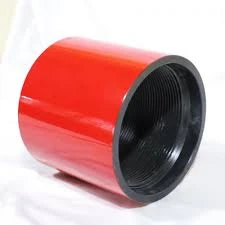- Afrikaans
- Albanian
- Amharic
- Arabic
- Armenian
- Azerbaijani
- Basque
- Belarusian
- Bengali
- Bosnian
- Bulgarian
- Catalan
- Cebuano
- Corsican
- Croatian
- Czech
- Danish
- Dutch
- English
- Esperanto
- Estonian
- Finnish
- French
- Frisian
- Galician
- Georgian
- German
- Greek
- Gujarati
- Haitian Creole
- hausa
- hawaiian
- Hebrew
- Hindi
- Miao
- Hungarian
- Icelandic
- igbo
- Indonesian
- irish
- Italian
- Japanese
- Javanese
- Kannada
- kazakh
- Khmer
- Rwandese
- Korean
- Kurdish
- Kyrgyz
- Lao
- Latin
- Latvian
- Lithuanian
- Luxembourgish
- Macedonian
- Malgashi
- Malay
- Malayalam
- Maltese
- Maori
- Marathi
- Mongolian
- Myanmar
- Nepali
- Norwegian
- Norwegian
- Occitan
- Pashto
- Persian
- Polish
- Portuguese
- Punjabi
- Romanian
- Russian
- Samoan
- Scottish Gaelic
- Serbian
- Sesotho
- Shona
- Sindhi
- Sinhala
- Slovak
- Slovenian
- Somali
- Spanish
- Sundanese
- Swahili
- Swedish
- Tagalog
- Tajik
- Tamil
- Tatar
- Telugu
- Thai
- Turkish
- Turkmen
- Ukrainian
- Urdu
- Uighur
- Uzbek
- Vietnamese
- Welsh
- Bantu
- Yiddish
- Yoruba
- Zulu
pipe bull plug
Understanding the Pipe Bull Plug An Essential Component in Plumbing and Pipe Systems
In the field of plumbing and pipe systems, the term pipe bull plug refers to a specialized fitting used to close off the end of a pipe. This seemingly simple component plays a crucial role in various applications, from residential plumbing to industrial systems. Understanding the function, design, and applications of the pipe bull plug can enhance one’s knowledge of plumbing and improve system efficiency.
What is a Pipe Bull Plug?
A pipe bull plug is a solid plug designed to fit into the end of a pipe. It is typically made from materials such as PVC, stainless steel, or brass, depending on the application and the environment in which it will be used. The primary purpose is to seal the end of a pipe to prevent the escape of fluids or gases, effectively making the pipe blockage tight and secure. This fitting is essential in maintaining system integrity, especially in pressurized environments or where leaks could lead to significant issues.
Design and Variability
Pipe bull plugs come in various sizes and configurations to fit different pipe diameters and types. One of the notable design features is that bull plugs can be available in both tapered and straight options. Tapered bull plugs are fitted into tapered pipe threads, creating a tight seal as the plug is screwed in, while straight bull plugs may require a different technique for securing them into the pipe, often relying on adhesives or welding.
pipe bull plug

Moreover, bull plugs can be made to accommodate various pressures and temperatures, making them versatile for multiple applications such as water supply systems, waste management, and gas distribution systems. The choice of material is also crucial based on factors like corrosion resistance, temperature tolerance, and the type of fluids being handled.
Applications of Pipe Bull Plugs
The applications of pipe bull plugs are extensive. In residential plumbing, they are often used to terminate drain lines and other auxiliary plumbing that may not be in use. This provides a neat, professional finish while preventing unwanted leaks or odors in living spaces.
In industrial contexts, bull plugs play a vital role in ensuring the safety and efficiency of processes. They are commonly used in systems where maintenance is required, allowing for sections of piping to be temporarily sealed off while work is conducted. Additionally, during pipeline installations, bull plugs can be employed to close sections of pipe until they are ready for operational use.
Conclusion
In conclusion, the pipe bull plug may appear to be a simple and unassuming part of plumbing systems; however, its importance cannot be overstated. By providing a secure, leak-proof seal at the end of pipes, bull plugs ensure the functionality and safety of various plumbing and piping systems. Understanding their design, function, and application can help both homeowners and professionals make informed decisions about their plumbing needs and enhance the overall efficiency of their systems. The next time you encounter a plumbing project, consider the vital role that a pipe bull plug can play in achieving a successful outcome.
-
Tubing Pup Joints: Essential Components for Oil and Gas OperationsNewsJul.10,2025
-
Pup Joints: Essential Components for Reliable Drilling OperationsNewsJul.10,2025
-
Pipe Couplings: Connecting Your World EfficientlyNewsJul.10,2025
-
Mastering Oilfield Operations with Quality Tubing and CasingNewsJul.10,2025
-
High-Quality Casing Couplings for Every NeedNewsJul.10,2025
-
Boost Your Drilling Efficiency with Premium Crossover Tools & Seating NipplesNewsJul.10,2025







